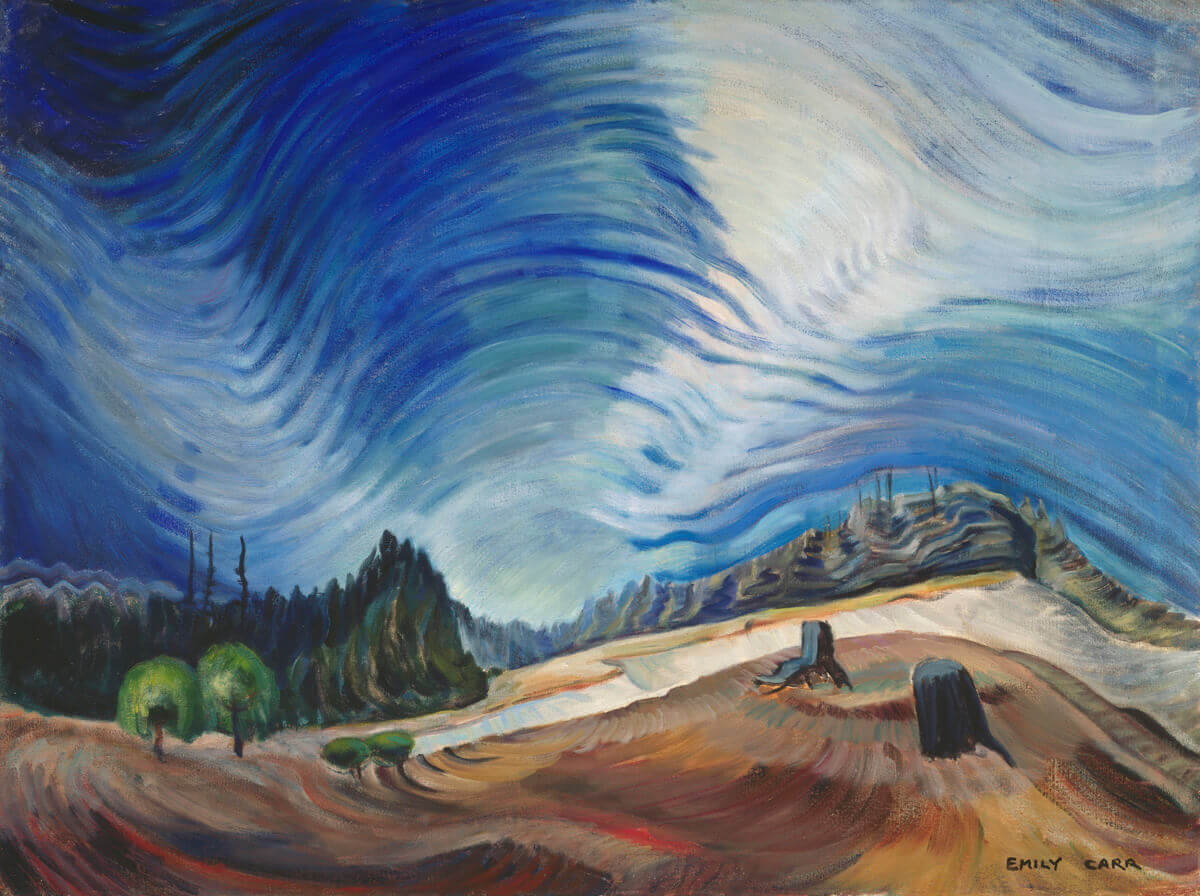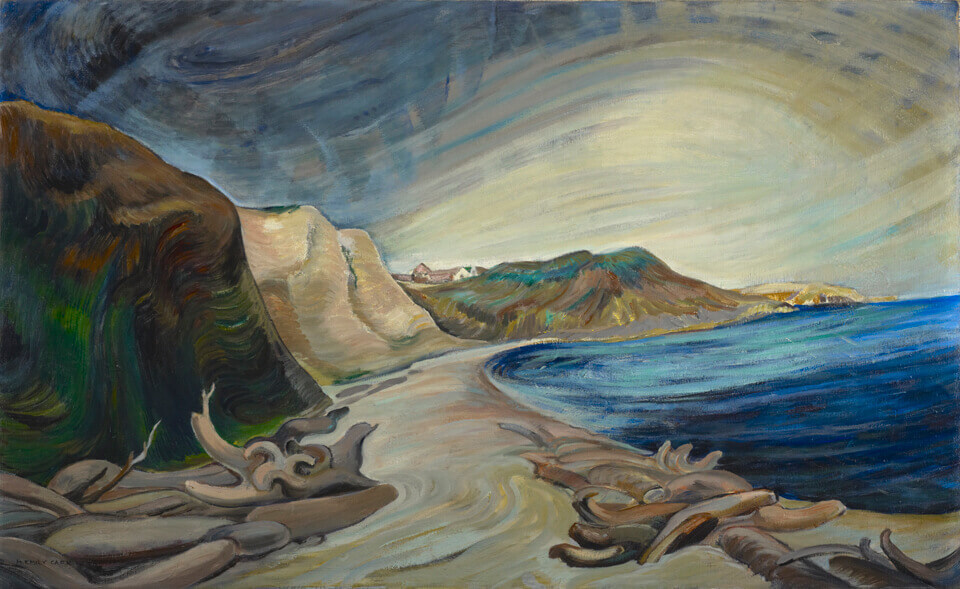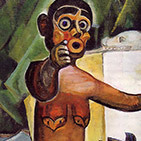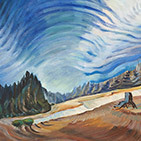Above the Gravel Pit 1937

Emily Carr, Above the Gravel Pit, 1937
Oil on canvas, 77.2 x 102.3 cm
Vancouver Art Gallery
Lawren Harris (1885–1970) wrote to Carr in 1929, advising her to leave “the totems alone for a year or more” and pursue instead “the tremendous elusive what lies behind.” In the 1930s Carr focused her attention on the landscape surrounding her Victoria home and developed a new gestural language to represent it. Above the Gravel Pit shows her also turning her gaze skyward. In her journal Carr describes this painting as “a skyscape with roots and gravel pits. I am striving for a wide, open sky with lots of movement, which is taken down into dried greens in the foreground and connected by roots and stumps to sky. My desire is to have it free and jubilant, not crucified into one spot, static. The colour of the brilliantly lighted sky will contrast with the black, white and tawny earth.”

Here Carr uses brushwork as a structuring device, reminiscent of the paintings she made in Brittany two decades earlier—for example, Autumn in France, 1911—and in the period that immediately followed her return to Canada from France in 1912. The brushwork also provides a design coherence: whereas in the earlier works differing brush-stroke treatments were used within a composition, in this mature work broad strokes become a unifying force.
A year before she painted Above the Gravel Pit Carr used this same treatment in Shoreline, 1936, part of a series of compositions that were inspired by landscapes and seascapes near Victoria—such as in Albert Head and Esquimalt Lagoon in Colwood, and in Metchosin, Langford, and Goldstream Park.

 About the Author
About the Author
 More Online Art Books
More Online Art Books
 Acknowledgements
Acknowledgements